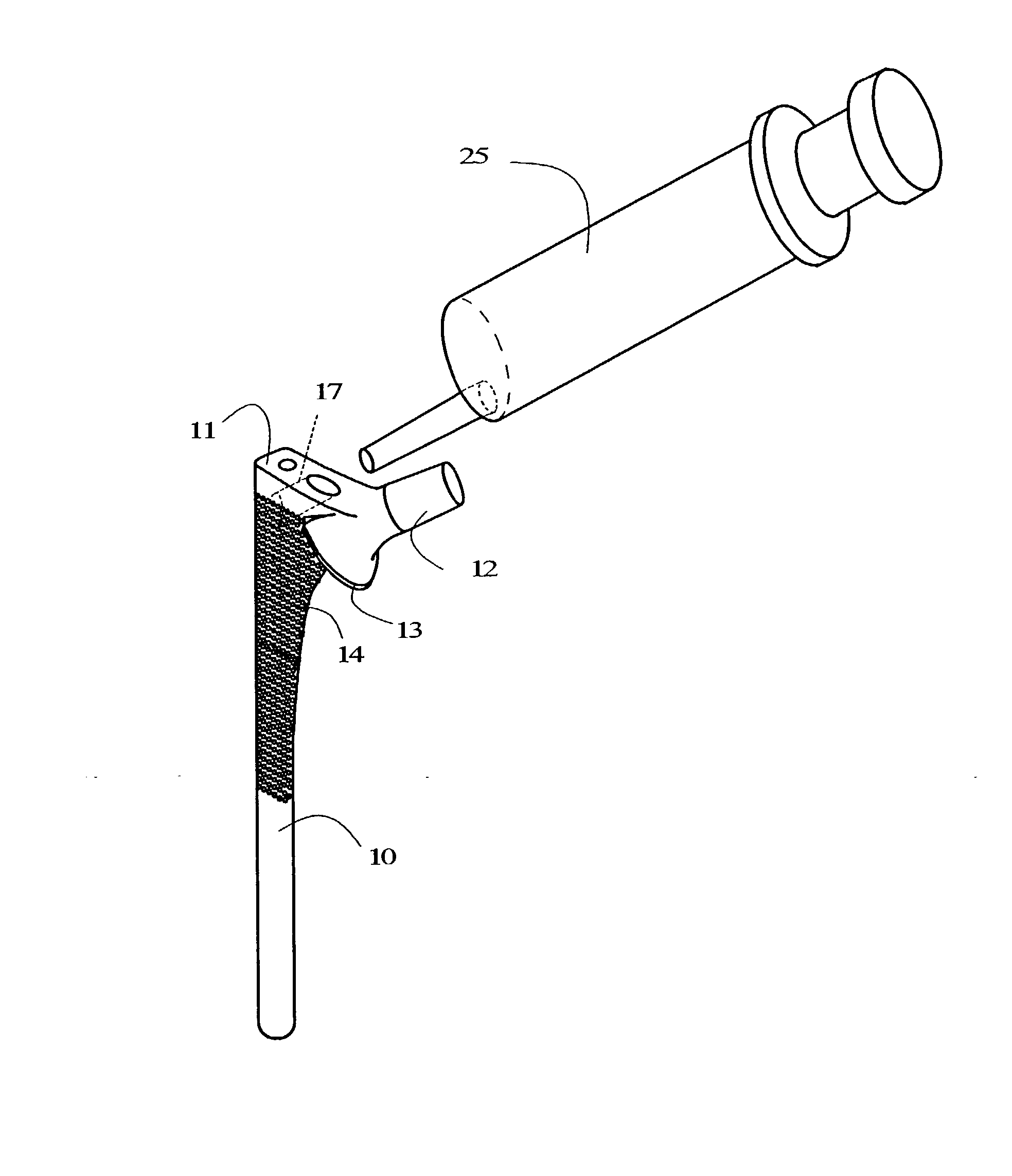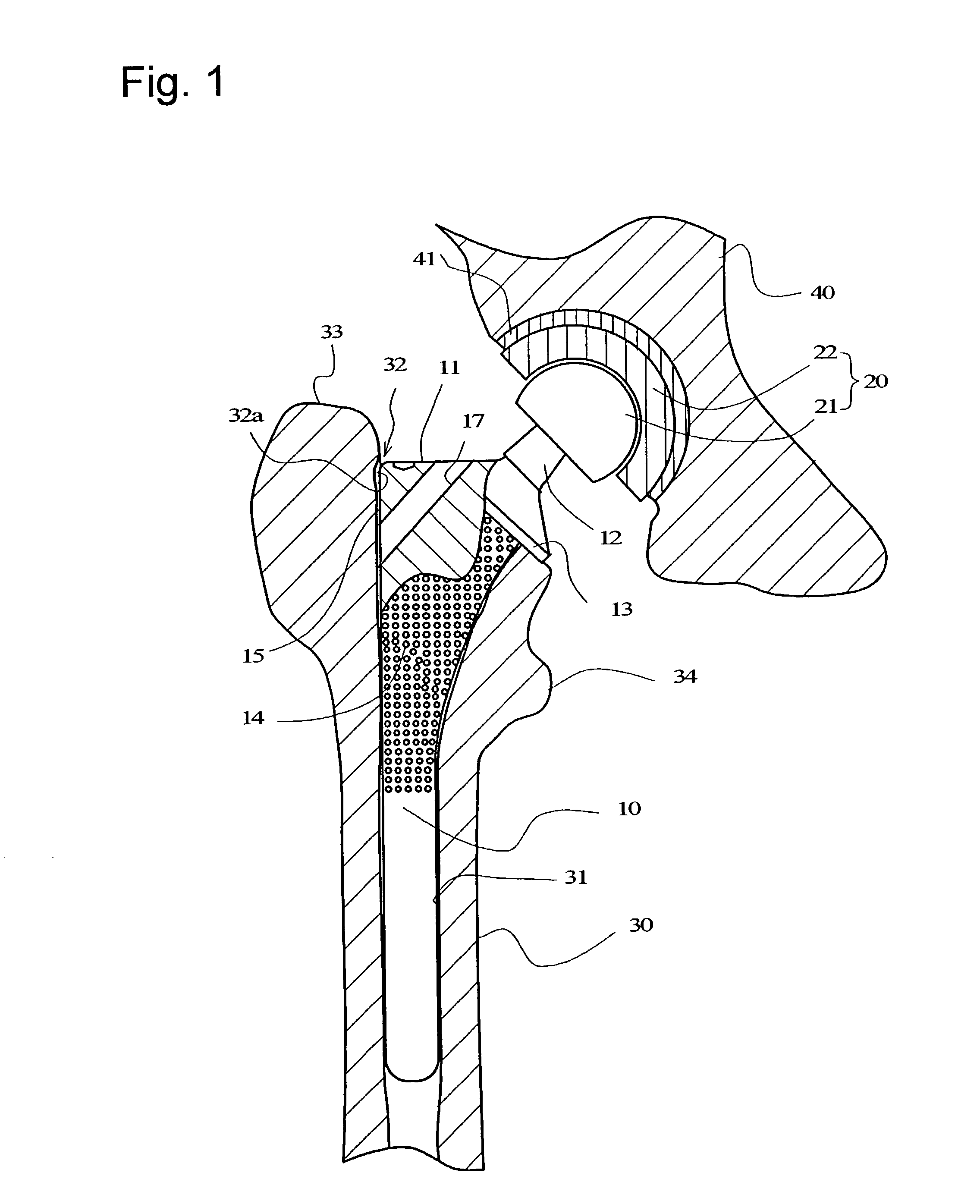Stem of artificial hip joint
a hip joint and stem technology, applied in the field of artificial hip joints, can solve the problems of long aftercare time, damage to the bone, and increase in the time period of the operation
- Summary
- Abstract
- Description
- Claims
- Application Information
AI Technical Summary
Problems solved by technology
Method used
Image
Examples
Embodiment Construction
[0022] The stem of an artificial hip joint according to the present invention will be explained with reference to FIGS. 1 to 4 hereinafter.
[0023] The artificial hip joint has a stem 10 and a head 20. The stem 10 is insertable into the medullary space 31 of a femur 30 to be fixed. The head 20 is constituted of a ball 21 and a socket 22, and the socket 22 is to be fixed to the cotyle 41 of a pelvis 40.
[0024] The stem 10 has an upper end portion 11 to face a proximal side of a human body and a backside 15 to face a greater trochanter 33. The upper end portion 11 has a rod 12 projecting obliquely upward. A ball 21 is engaged with, and fixed to, the rod 12. The ball 21 is slidably engaged with the socket 22, to form a joint that performs a relative motion. The stem 10 has a number of fine projections 14 formed on a surface of its portion that is to be positioned between a greater trochanter 30 and a small trochanter 33. The fine projections 14 are formed, for example, by plasma-spray-app...
PUM
 Login to View More
Login to View More Abstract
Description
Claims
Application Information
 Login to View More
Login to View More - R&D
- Intellectual Property
- Life Sciences
- Materials
- Tech Scout
- Unparalleled Data Quality
- Higher Quality Content
- 60% Fewer Hallucinations
Browse by: Latest US Patents, China's latest patents, Technical Efficacy Thesaurus, Application Domain, Technology Topic, Popular Technical Reports.
© 2025 PatSnap. All rights reserved.Legal|Privacy policy|Modern Slavery Act Transparency Statement|Sitemap|About US| Contact US: help@patsnap.com



